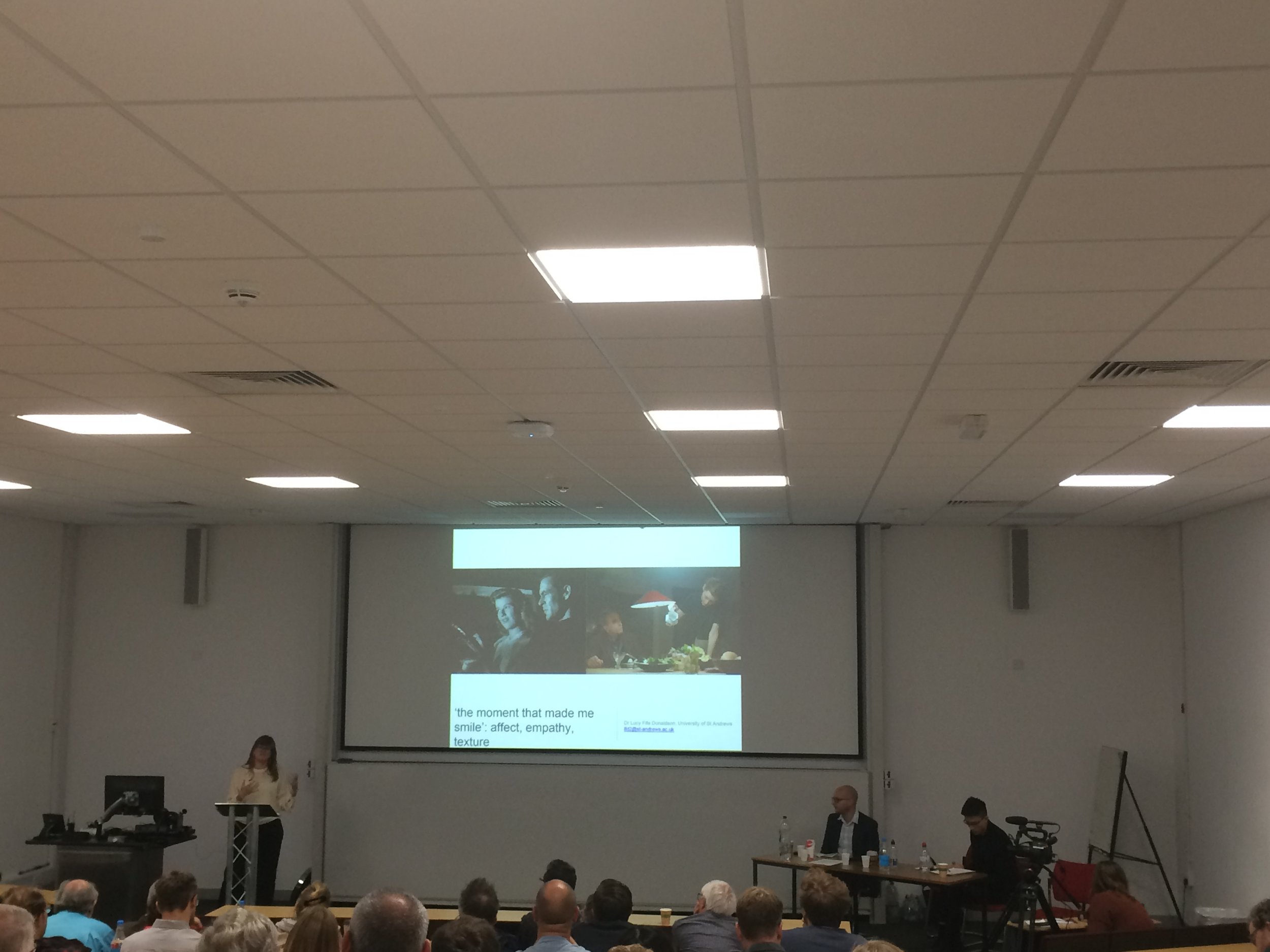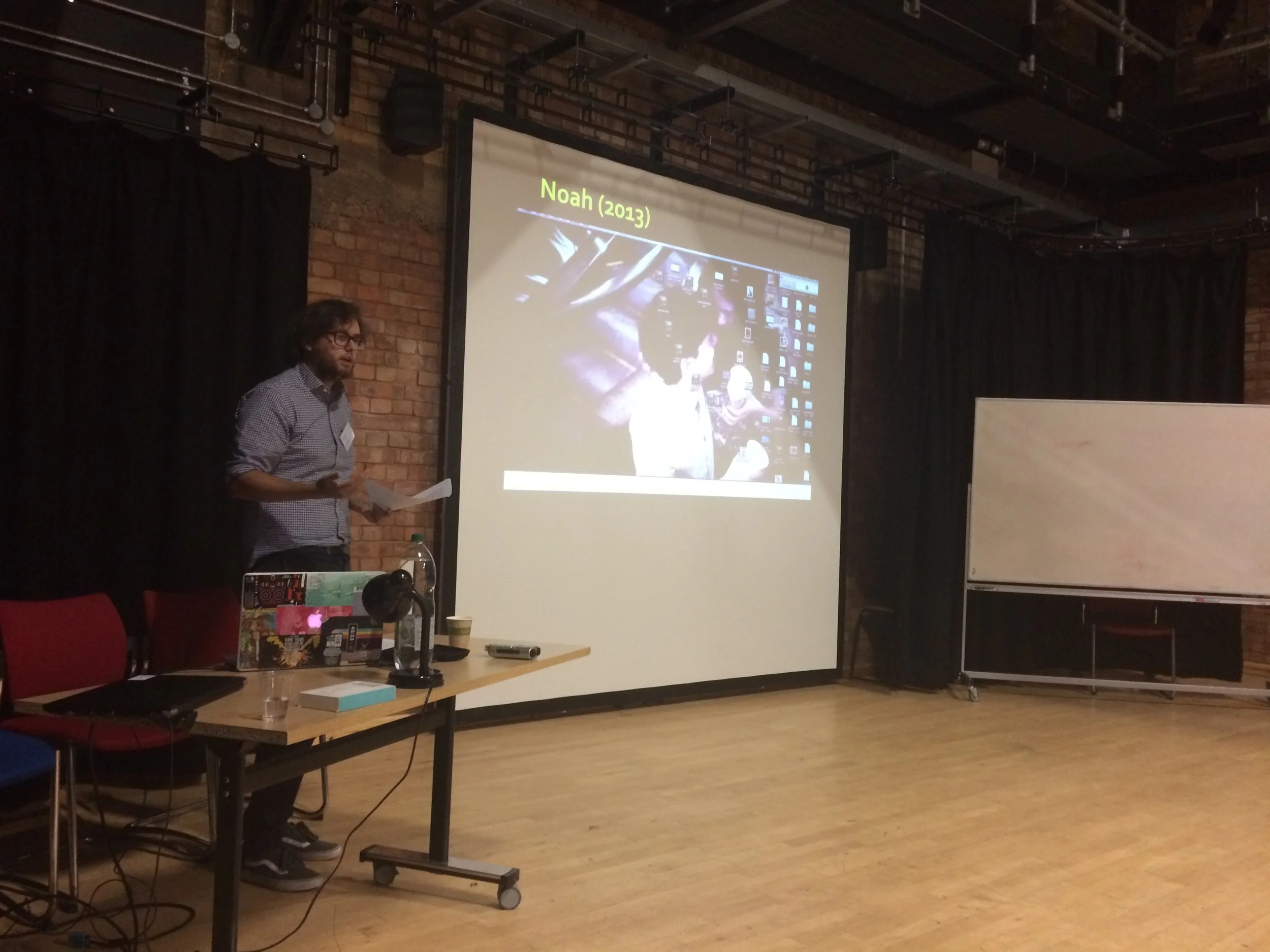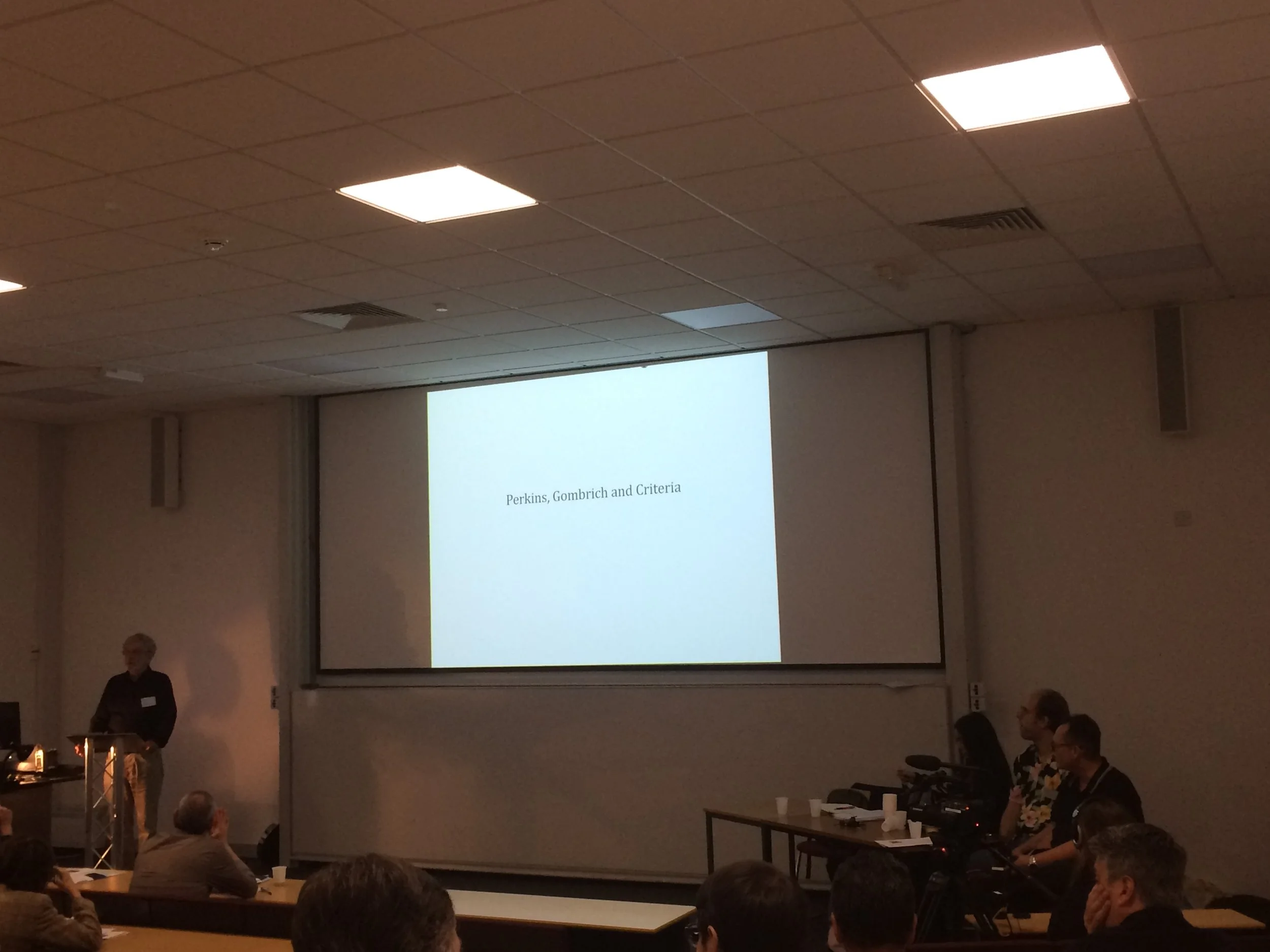Review: Film as Film Today - On the Criticism and Theory of V. F. Perkins
A wealth of staff and students both past and present came together across two days at the University of Warwick to celebrate and reflect upon the work of V. F. Perkins (1936-2016). It was Perkins’ immeasurable contribution to Film Studies and his writing on popular cinema that would come to form the basis of the superlative Film as Film Today: On the Criticism and Theory of V. F. Perkins conference co-organised with due fondness and feeling by James MacDowell (University of Warwick) and Andrew Klevan (University of Oxford). Despite a modest number of publications - including his only full-length book Film as Film (1972 [1993]) from which the conference drew both its title and its inspiration - Perkins was a foundational figure in the discipline, and throughout his time as a university lecturer at Warwick remained a key proponent of the forensic attention to cinema’s details, the inseparable relationship between form and content, and the interpretation of style and meaning. However, for many of the delegates who attended the event held on 4th-5th September (and in the building where he taught for so long), Perkins was more than just an insightful and eloquent theorist and writer on cinema. He was a friend, colleague, teacher, and father. A touching tribute to Perkins’ life was paid by the British Film Institute following his passing back in 2016, and while many of the elements of his film analysis credo underwrote the approaches on display in the papers delivered as part of Film as Film Today, best remembered across the two days were the shared stories and the swapping of memories. Everyone, it seemed, had Victor in common.
A full programme for the symposium can be found here, and it is certainly not the job of this review to do justice to the scope of subject matter and range of cinema pulled into alignment with Perkins’ publications, whether this was his early writing for the Movie journal (which he also co-founded in 1962) through to Film as Film and more recent pieces on fictional worlds (Perkins 2005) and Jean Renoir’s 1939 feature film La Règle du jeu (Perkins 2012). Perkins’ importance to the way writers write and theorists theorize the medium quickly became clear right from the day’s first panel (Fig. 2), not just in the enthusiasm with which speakers spoke fondly of his influence, but in the way that specific papers sought to ‘make strange’ his formulations, methods, and arguments through their possible applicability across a spectrum of image-making technologies. There were ‘Perkins and…’ papers on horror cinema, computer graphics, animation, and television. Not necessarily areas within which he had published, but examples of how his writing continued to provide a useful vocabulary that enriches all corners of Film and Media Studies. Alongside these more exploratory papers were talks about, perhaps, more typically Perkinsian texts rooted in the pleasures of popular Hollywood cinema, from In a Lonely Place (Nicholas Ray, 1950) to Letter from an Unknown Woman (Max Ophüls, 1948), yet which no less attempted to add more nuance and detail to the way we engage with these particular favourites. The result was a conference that looked both forwards and backwards, moving effortlessly between Perkins’ early criticism and the value in maintaining a critical relationship between his work and recent multimedia trends, all supported by a notable sense of respect and rigour in the precise nature of the topics being addressed. Avoiding mawkishness and sentimentality, speakers responded in earnest to the intentions of the symposium to engage with Perkins’ “body of work which poses important questions and challenges for the study of film, television, media, and aesthetics today” and, in the process, to perhaps shine a light on someone who remains undervalued within the very discipline to which he contributed so much.
Given the nature of the conference and the positioning of Perkins (and his writing) as its central spine, papers clustered around certain significant areas: aesthetics, style, believability, balance, coherence, credibility, and interpretation. Yet while such overlap may normally breed degrees of unwanted similarity and repetition, here any points of continuity and connection were strongly additive to the enjoyment - Perkins’ own “greatest hits” playing out across papers in ways that gave the conference its own clear sense of coherence and fluency. Associations between Perkins and British cinema (with which he enjoyed something of a ‘fraught’ relationship) suddenly dovetailed with formulations of affect and the phenomenological encounter (Fig. 3); discussions of the new (sub-?)genre of the ‘desktop film’ (such as Noah [Patrick Cederberg & Walter Woodman, 2013] and Unfriended [Leo Gabriadze, 2014]) (Fig. 4) sat alongside key figures from art history (Fig. 5); and questions of casting in Classical Hollywood were brought to bear on contemporary U.S. cinema’s ever-broadening visual effects catalogue. Such methodological frictions sparking the energy for some considered debates around how scholars might understand, reflect upon and continue to use Perkins in the pursuit of cinematic comprehension, if not what certain critical frameworks to which he was committed might mean for Film Studies in the post-photographic age. Among the impressively international line-up of speakers, many were drawn to the pursuit and development of Perkins’ arguments surrounding the fictionality and worldliness of fictional worlds. The closing keynote for Day 1 from Professor George Toles (University of Manitoba), for example, evaluated fictional worlds as the essence of coherence and cohesiveness, and introduced the notion of “world particles” as a way of fleshing out how intensely felt (and indeed peripheral) moments create the world and constitute its ‘cosmology.’ Ideas of world creation were also revisited in papers on the realistic authenticity of credibility; the contemporary gallery space; the methodological correspondences between Perkins and film philosopher Stanley Cavell; and the articulation of domestic space in the films of Nicholas Ray. Another of the conference’s keynote speakers, Adrian Martin (Monash University), would again touch on fictional worldhood when discussing the network of cause-and-effect relationships that exist between characters in a world, and how as writers on film we should respond to nuances of exposition and expression in answering the questions that the film sets up.
Yet it is these same discourses of worldliness that seem to be an equally important critical thread connecting the project of fantasy with the possibilities of animation. It is perhaps no surprise that recent writing that puts pressure on modes of animated worldhood (Wood [2006]; Telotte [2010]; Buchan [2011]; Crafton [2013]; Holliday [2018]) has been matched by a comparable consideration of how fantasy texts construct their own worlds, as well as the tools at work in this processes. The world-making capabilities of animation are such that animators must be responsible for “every aspect of what is a highly detailed process of creating a world rather than merely inhabiting one’ (Wells 2002: 26, original emphasis). Fantasy cinema is equally invested in questions of mimesis and magic that supports how its worlds may make reference (or not) to the world of the spectator. David Butler’s book Fantasy Cinema (tellingly subtitled “impossible worlds on screen”) notes that “One of the greatest challenges facing fantasy filmmakers is the construction and portrayal of the worlds and spaces in which their narratives take place” (2009: 79). Given these rich points of intersection between fantasy and animation along the fault lines of worldhood, Perkins becomes a figure who can inspire greater thinking in the area of film worlds and, in doing so, can usefully play across the fantasy/animation relation. As I’ve argued elsewhere, Perkins’ ideas around the “often-overlooked ‘compromise position’ occupied by the photographic narrative film, in which a ‘fictional “reality” is created in order to be recorded’ (1993: 61)” can be a way of understanding how animated worlds are like all fictional worlds in that they regularly strike creative bargains with the real (Holliday 2018: 65). This, in turn, allows us to celebrate animation as a fiction beyond its unique ontology, and instead in light of Perkins’ claim that to study worldhood is to “illuminate artifice, not deny it” largely because worldhood (like the animated medium) is “not primarily an issue of realism” (Perkins 2005: 34). Similarly, James Walters’ recent book on the machinations of the fantasy film likewise draws heavily from Perkins’ understanding of how meaning is constructed in putatively unreal spaces. Building on his earlier work on cinema’s many fictional worlds (Walters 2008), Walters argues that in the case of fantasy we can ultimately follow “Perkins’ reasoning” and “come to appreciate that coherence within a film is not simply the case of the dramatic world making sense to us through the credible arrangement of elements. Rather, it involves a complex of significant relationships that conveys meaning in a style that is neither obtrusive or over-assertive” (Walters 2011: 115). As fantasy “exists beyond the realm of the knowable and the explainable” (ibid.: 18), concepts of coherence and credibility so central to Perkins’ work become vital ways of managing spectatorial exposure to such spaces. We might even say that fantasy, as with animation as a medium of creative possibility, is invested more readily in the interplay of style and meaning as a way of expressing the stories, characters, and events contained within its worlds. It is therefore in this process of ‘worlding’ that scholars of fantasy/animation might ultimately turn to Perkins to make greater sense of the animated fantasy’s sums of the imaginable, if not its transfiguration of the real world into fantastic forms of fiction.
The ways in which V. F. Perkins was affectionately and rigorously unpacked during the conference served to reinforce his importance to the way we think about cinema, a useful (if at times tricky, though never convoluted) touchstone for qualifying our analysis of a host of filmmakers and genres. After two days of Perkins'-level precision (and a few trips down memory lane undertaken by those returning to the university’s department after several years away), the conference’s final words were appropriately delivered by daughter Polly Perkins, who announced the discovery of an original Perkins film script (co-written with Nicholas Ray) titled The Entertainment. It was fitting that Film as Film Today would end as it had begun, namely by bringing attendees back to Perkins and his words on the page. However, with many unpublished papers and scribbled notes waiting to be sorted, there is still the chance for Perkins to be understood in new ways and in fresh contexts. Film as Film Today therefore left thinking me about how Perkins’ writing both old, new and undiscovered might find a home in the close appreciation of animated fantasies, offering writers, academics and even animators a ‘way in’ to fantasy/animation’s embodiment of tensions. Perkins reminded us time and time again that stories do not exist outside of how they are told, and the contained meanings held captive in fantasy and animation may prove hospitable to telling such tales.
Now, that’s entertainment.
References
Buchan, Suzanne. The Quay Brothers: Into a Metaphysical Playroom (Minneapolis: University of Minnesota Press, 2011).
Butler, David. Fantasy Cinema: Impossible Worlds on Screen (London:: Wallflower Press, 2009).
Crafton, Donald. Shadow of a Mouse: Performance, Belief, and World-Making in Animation (Berkeley: University of California Press, 2013).
Holliday, Christopher. The Computer-Animated Film: Industry, Style and Genre, 63-84 (Edinburgh: Edinburgh University Press, 2018).
Perkins, V. F. Film as Film: Understanding and Judging Movies (New York: Da Capo Press, 1993).
———. “Where is the world? The horizon of events in movie fiction,” in Style and Meaning: Studies in the Detailed Analysis of Film, ed. John Gibbs and Douglas Pye, 16-41 (Manchester: Manchester University Press, 2005).
———. La Règle du jeu (BFI Film Classics) (London: BFI Publishing, 2012).
Telotte, J.P. Animating Space: From Mickey to Wall-E (Lexington: University Press of Kentucky, 2010). Walters, James. Alternative Worlds in Hollywood Cinema: Resonance Between Realms (Bristol & Chicago: Intellect, 2008).
Walters, James. Fantasy Film: A Critical Introduction (Oxford & New York: Berg, 2011).
Wells, Paul. Animation: Genre and Authorship (London: Wallflower Press, 2002).
Wood, Aylish (2006), “Re-animating Space,” animation: an interdisciplinary journal 1, no. 2 (November): 133-152.





